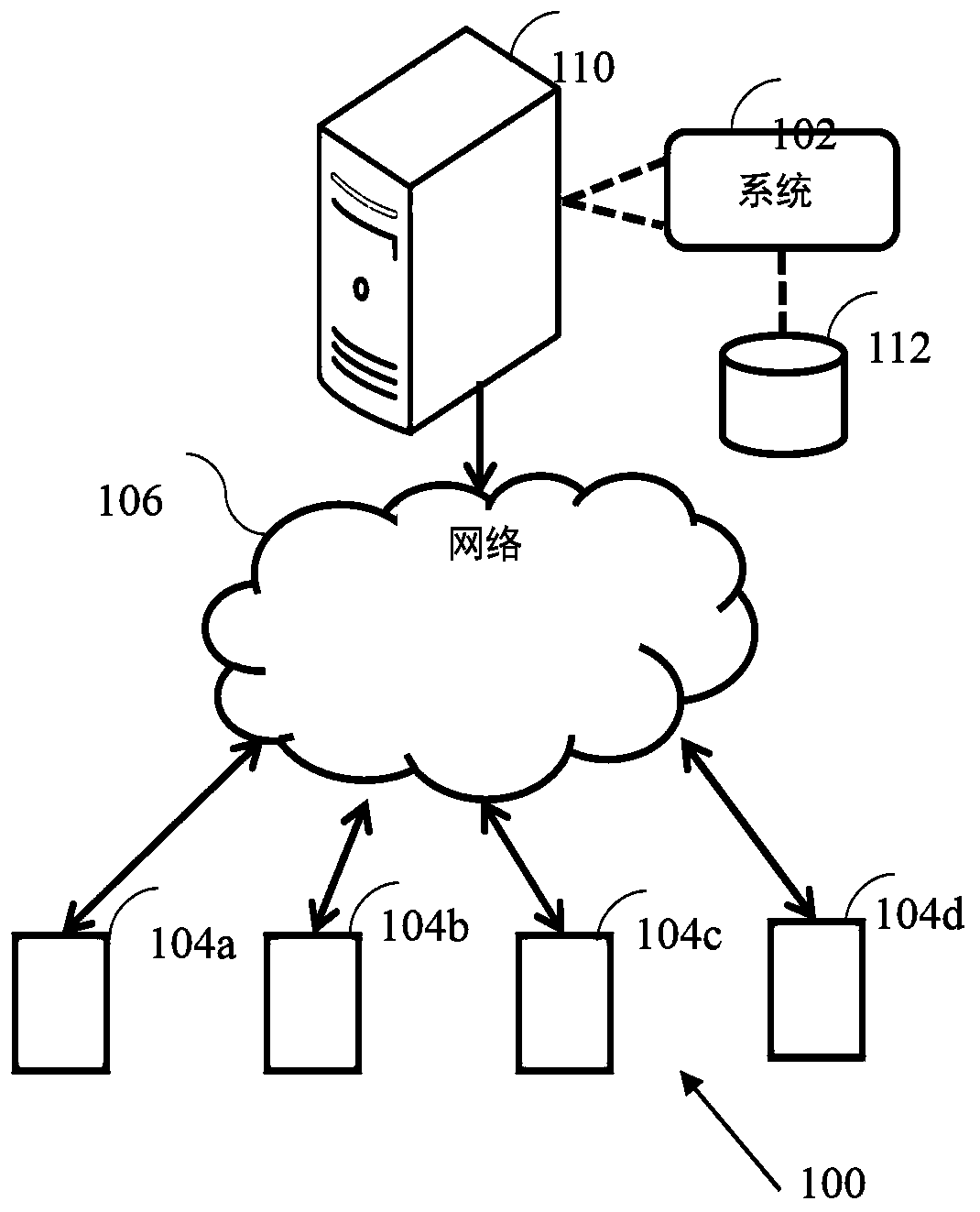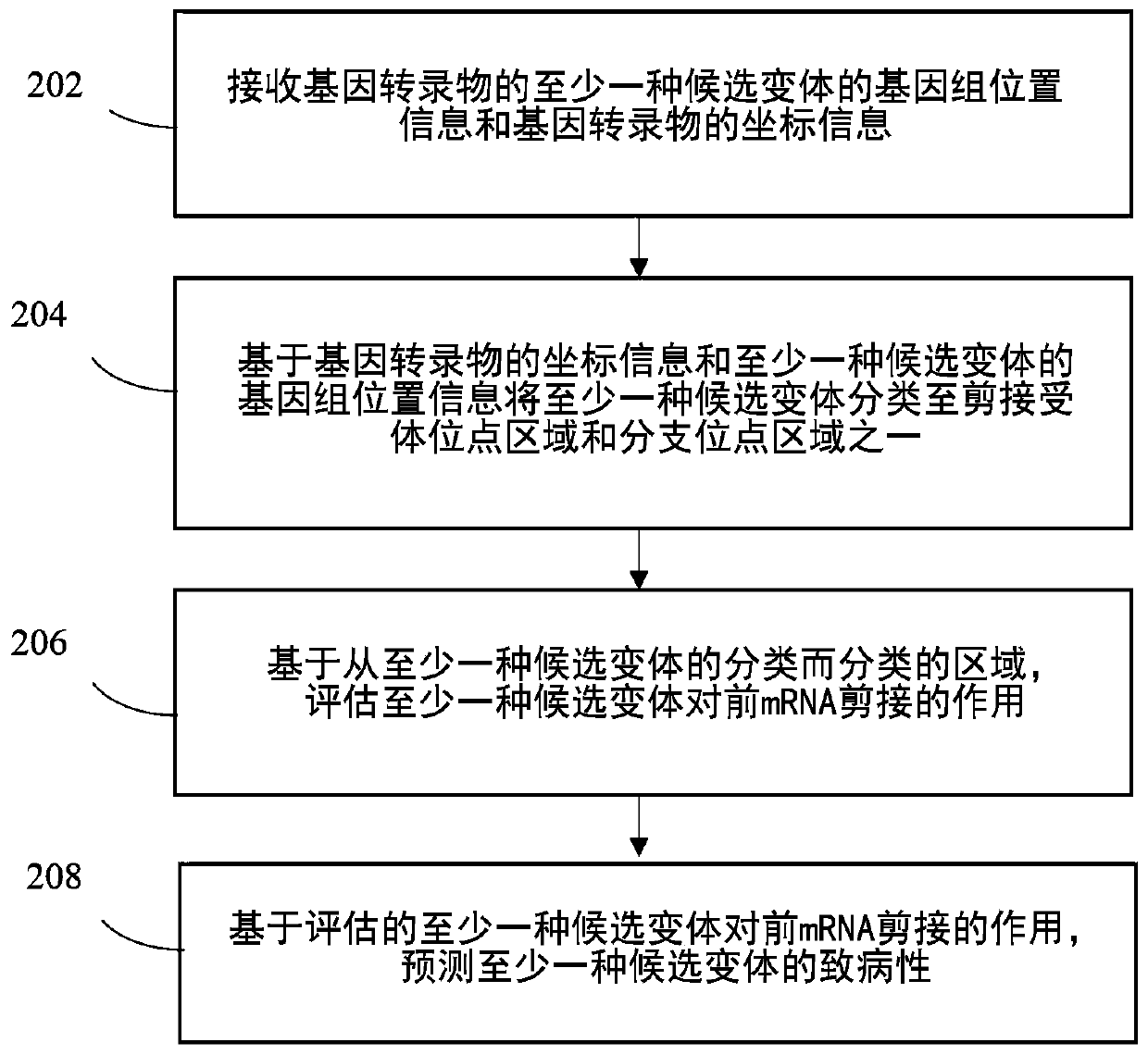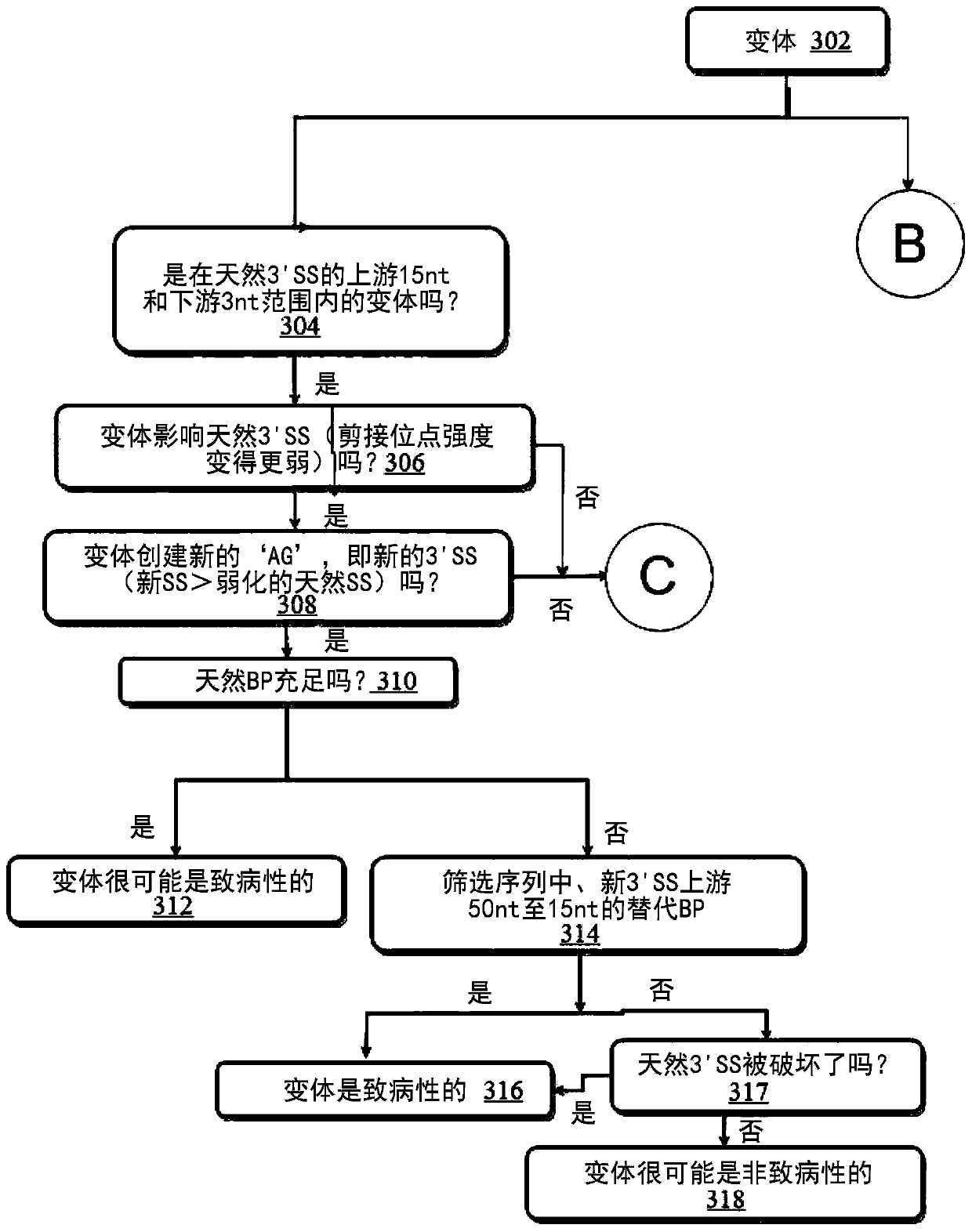Methods and systems for predicting effect of genomic variation on pre-mRNA splicing
A genome and gene transcription technology, applied in the fields of genomics, proteomics, instruments, etc., can solve problems such as hindering accurate prediction, time-consuming labor intensity, etc.
- Summary
- Abstract
- Description
- Claims
- Application Information
AI Technical Summary
Problems solved by technology
Method used
Image
Examples
Embodiment 1
[0044] Example 1 - OTC: In one embodiment, a mutation in intron 9 was detected in a Clinvar-based variant screen of the ornithine carbamoyltransferase encoding gene (OTC) as a site for disrupting the canonical splice acceptor Body C>G. An alternative splice acceptor site (MaxEnt: 8.30) was identified 25 bases downstream of the canonical splice acceptor junction (in the exonic region). A canonical branch point (score: 2.80), 29 bases upstream of the identified cryptic splice acceptor, was considered suitable. The inactivation of the canonical splice acceptor and the activation of the cryptic acceptor site have been verified experimentally with the help of PCR, and it has been demonstrated that the resulting deviation in splicing leads to an abnormal 50-amino C-terminal sequence in the protein, resulting in a hyperammonia Acid hormone crisis (hyperammoneamic crisis). The values corresponding to OTC are shown in Table 1.
Embodiment 2
[0045] Example 2 - MAN2B1: In another embodiment, a T>C transition was found in intron 14 of the mannosidase alpha class 2B member 1 gene (MAN2B1), disrupting the canonical splice acceptor site. A cryptic branch site is activated upon loss of the canonical splice acceptor, and activation of the cryptic splice acceptor 31 nt downstream of the canonical 3' splice site also occurs (MaxEnt: 4.78), resulting in the first 31 nt of exon 15 The deletion of , resulting in a frameshift mutation due to the introduction of a stop codon, results in a premature termination of the protein (Table 1). With the aid of RT-PCR, disruption of the canonical 3' splice acceptor site and activation of cryptic splice sites leading to partial exon deletions have been demonstrated. In conclusion, the analytical method shows the potential to reveal one of the causes of α-mannosidase deficiency.
[0046]
[0047] Table 1
[0048] Experiments reveal some cases of discovery. In this paper, the reasons ...
Embodiment 3
[0049] Example 3 - Alanine-glyoxylate and serine-pyruvate transaminases (AGXT): In an exemplary embodiment, an A>G mutation was found in intron 5 by screening for AGXT gene variants. Because the variant is located at a canonical splice acceptor site, it was previously classified as a splice-site mutation, although the role of the variant and its specific impact on splicing bias has not been defined. As a result of the mutation (MaxEnt: 4.01 > -3.94), the canonical splice acceptor site for intron 5 was disrupted. Due to disruption of the natural splice acceptor site, a cryptic splice acceptor site (MaxEnt: 5.01) 28 nucleotides downstream of the canonical splice acceptor site was activated. In addition, when screening for suitable branch sites for cryptic splice acceptors, potential branch sites were found, namely 35 bases upstream of the cryptic splice acceptor site. In summary, on the basis of the proposed model, it can be observed that due to the mutation, the original splic...
PUM
 Login to View More
Login to View More Abstract
Description
Claims
Application Information
 Login to View More
Login to View More - R&D
- Intellectual Property
- Life Sciences
- Materials
- Tech Scout
- Unparalleled Data Quality
- Higher Quality Content
- 60% Fewer Hallucinations
Browse by: Latest US Patents, China's latest patents, Technical Efficacy Thesaurus, Application Domain, Technology Topic, Popular Technical Reports.
© 2025 PatSnap. All rights reserved.Legal|Privacy policy|Modern Slavery Act Transparency Statement|Sitemap|About US| Contact US: help@patsnap.com



